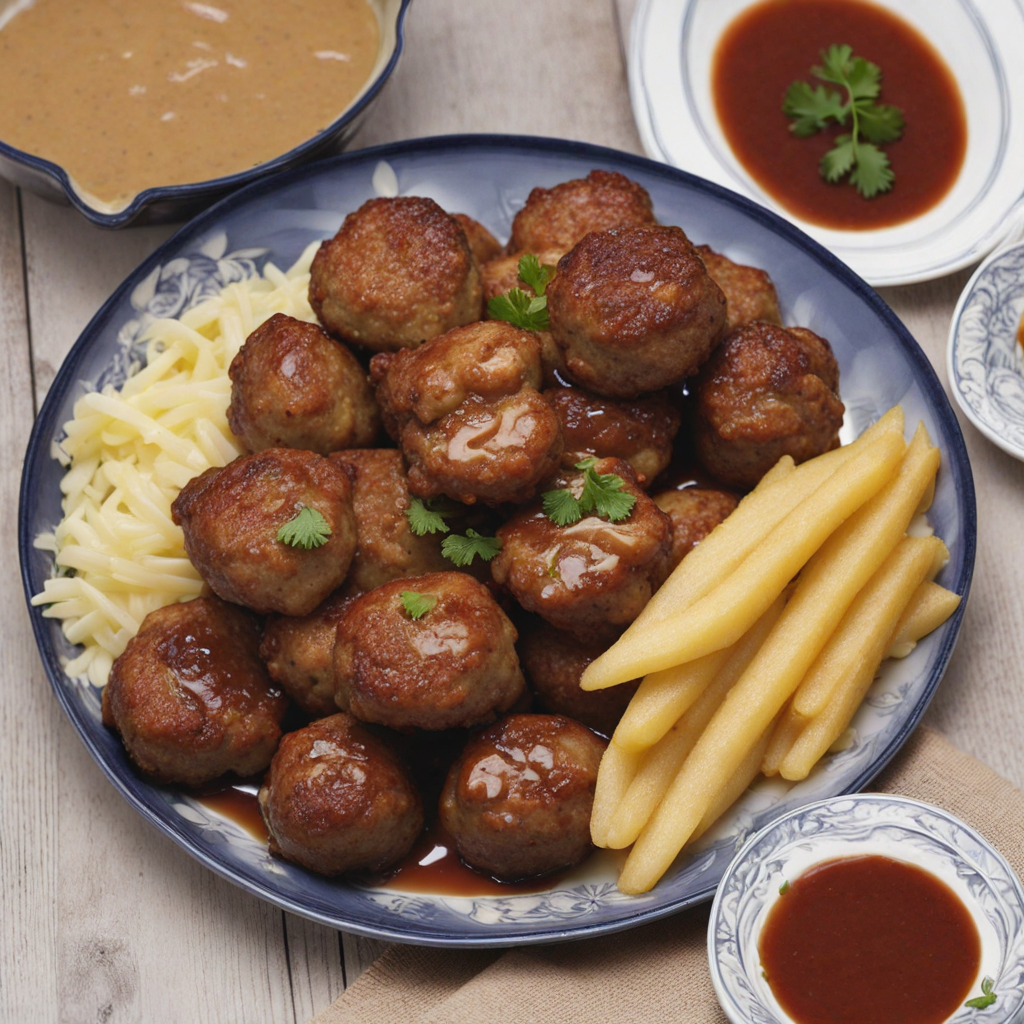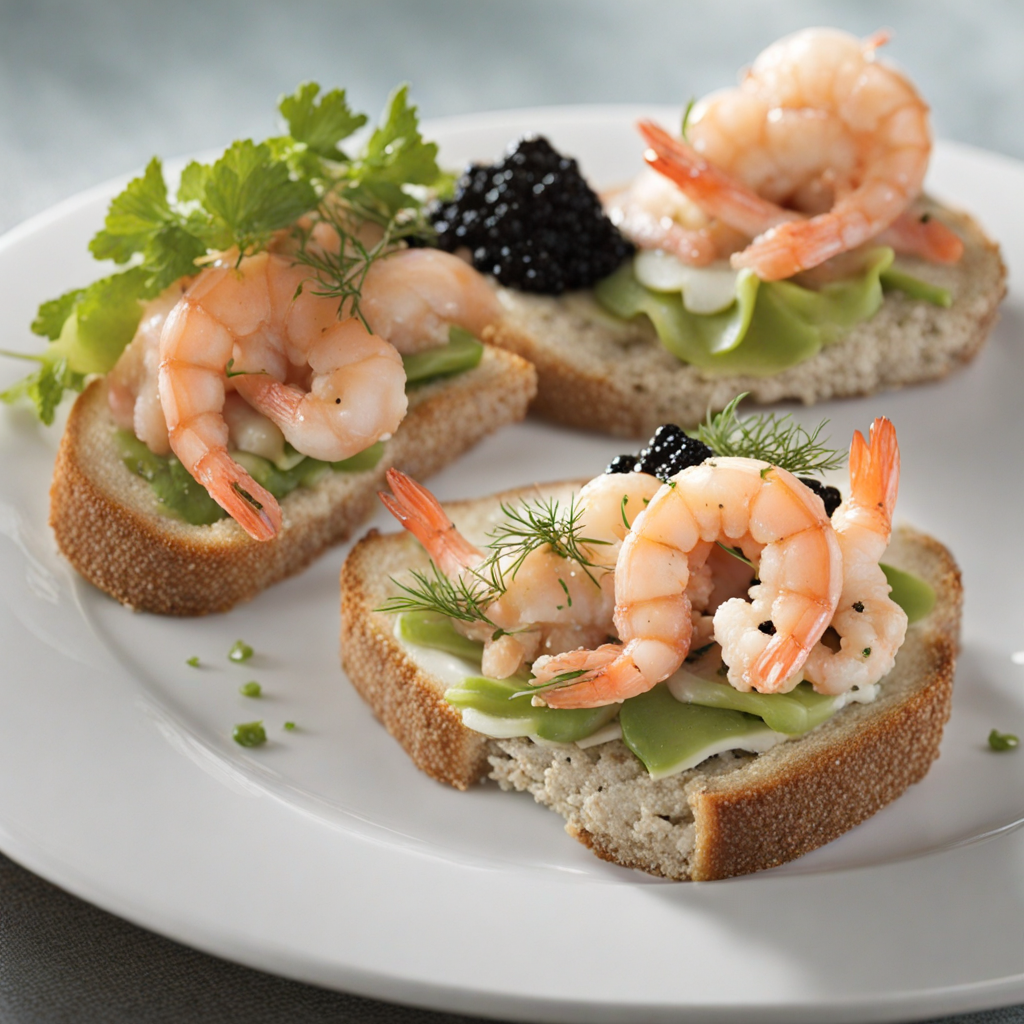Kartoffelmad
Kartoffelmad, a delightful Danish open-faced sandwich, showcases the humble potato in a way that elevates it to a culinary star. Typically served on a slice of dense rye bread, this dish features boiled or roasted potatoes sliced into thick rounds, which are then artfully arranged atop the bread. The combination of the hearty rye and the creamy potatoes creates a satisfying texture contrast, making each bite a delightful experience. Often garnished with fresh herbs, such as chives or dill, the presentation is as appealing as the taste itself, inviting food lovers to indulge in a unique take on traditional Danish flavors. In addition to the potatoes, Kartoffelmad often incorporates a variety of toppings that enhance its flavor profile. Common additions include a smear of butter or mayonnaise, which adds richness and creaminess to the dish. Some variations might feature crispy bacon or smoked salmon, introducing a savory element that complements the earthy taste of the potatoes. The marriage of these ingredients results in a well-rounded dish that is both comforting and satisfying, perfect for brunch or a light lunch. This iconic Danish food not only embodies the country's love for simple yet wholesome ingredients but also reflects its culinary heritage. Each bite of Kartoffelmad offers a glimpse into Denmark's agricultural roots, showcasing the country's commitment to using fresh, locally sourced produce. Whether enjoyed at a traditional café or prepared at home, Kartoffelmad is a must-try for anyone eager to explore the delicious nuances of Danish cuisine, offering a unique and flavorful experience that is sure to please the palate.
How It Became This Dish
Kartoffelmad: A Delicious Journey Through Danish Culinary History Origins and Early Roots Kartoffelmad, which translates to "potato bread" in English, is a traditional Danish open-faced sandwich that primarily features boiled potatoes as a key ingredient. The roots of Kartoffelmad can be traced back to the early 19th century when Denmark was undergoing significant agricultural and societal changes. The potato was introduced to Europe in the late 16th century from the Americas and quickly became a staple crop across the continent due to its versatility and nutritional value. In Denmark, the humble potato became a symbol of sustenance, especially during the harsh winters when other crops failed. The growing popularity of potatoes among the Danish peasantry coincided with the rise of rye bread as a dietary staple. Rye, which was more resilient than wheat in the colder climates, was the primary bread used by the working class. The combination of hearty rye bread topped with the nourishing potato became a practical and economical meal that would sustain families through long days of labor. Cultural Significance Kartoffelmad is much more than just a dish; it represents a cultural connection to Danish identity and tradition. It embodies the values of simplicity and resourcefulness, hallmarks of the Danish ethos. The open-faced sandwich is a canvas for creativity, allowing individuals to express personal tastes while adhering to traditional ingredients. In Denmark, food plays an essential role in family and social gatherings. Kartoffelmad is often served during festive occasions, family meals, or gatherings with friends. It is a dish that encourages togetherness and conversation, as diners often share stories and laughter while enjoying this simple yet satisfying fare. In addition to its social significance, Kartoffelmad has also served as a symbol of the country's agricultural heritage. The dish not only highlights the importance of the potato but also showcases the craftsmanship of Danish bakers, who prepare the rye bread. The bread's dense texture and nutty flavor complement the creaminess of the potatoes, creating a harmonious balance that reflects the Danish love for wholesome and flavorful food. Development Over Time As Denmark evolved through the 19th and 20th centuries, so did Kartoffelmad. The industrial revolution and urbanization led to changes in food production, availability, and consumption. With an increase in potato cultivation, particularly in the fertile regions of Jutland and Funen, Kartoffelmad became more accessible to the broader population. During World War II, when food scarcity was prevalent, Kartoffelmad became a symbol of resilience. It was a dish that could be made with limited resources, allowing families to stretch their meals while still providing essential nutrients. The use of potatoes, which could be stored for long periods, made it a practical choice during times of hardship. In the post-war era, as Denmark experienced economic growth and globalization, traditional dishes like Kartoffelmad began to evolve. While the classic recipe remained a staple in Danish households, chefs and home cooks began experimenting with different toppings and presentations. Today, Kartoffelmad can be found in various forms, from traditional versions topped with simple ingredients like butter, salt, and chives to more modern interpretations that include gourmet cheeses, cured meats, and vibrant vegetable garnishes. The sandwich has also gained recognition beyond Denmark's borders. In recent years, the global trend of open-faced sandwiches has brought Kartoffelmad to international attention. Food enthusiasts and travelers who visit Denmark seek out this iconic dish, contributing to a renewed appreciation for traditional Danish cuisine. This culinary curiosity has led to the emergence of contemporary cafés and restaurants dedicated to serving exquisite versions of Kartoffelmad, often with a focus on local and seasonal ingredients. Modern Interpretations and Innovations The modern Danish culinary scene has embraced Kartoffelmad, showcasing it in artful presentations that highlight the dish's versatility. Chefs have taken the traditional elements and elevated them, creating visually stunning plates that appeal to both the palate and the eye. Ingredients such as pickled herring, smoked salmon, and a variety of fresh herbs have made their way onto the Kartoffelmad, reflecting Denmark's thriving seafood culture and the influence of New Nordic cuisine. Moreover, the rise of food sustainability and farm-to-table movements has further impacted the way Kartoffelmad is prepared and served. Chefs focus on sourcing ingredients locally, supporting farmers and producers who prioritize sustainable practices. This emphasis on quality and locality has enhanced the flavor profiles of the dish while maintaining its traditional roots. In addition to the gastronomic innovations, Kartoffelmad has also found its place in popular culture. Social media platforms like Instagram have allowed food lovers to share their Kartoffelmad creations, showcasing the dish's aesthetic appeal. Food blogs and travel sites feature Kartoffelmad as a must-try item for anyone visiting Denmark, further solidifying its status as a national treasure. Conclusion Kartoffelmad is more than just a sandwich; it is a reflection of Denmark's rich agricultural history, cultural values, and culinary evolution. From its humble beginnings as a simple meal for the working class to its status as a beloved dish that garners international recognition, Kartoffelmad has stood the test of time. As it continues to evolve and adapt to modern tastes, Kartoffelmad remains a connection to Denmark's roots, a comfort food that brings people together, and a celebration of the country's agricultural heritage. Whether enjoyed in a traditional setting or reimagined in a contemporary café, Kartoffelmad will forever hold a cherished place in the hearts and stomachs of the Danish people.
You may like
Discover local flavors from Denmark







